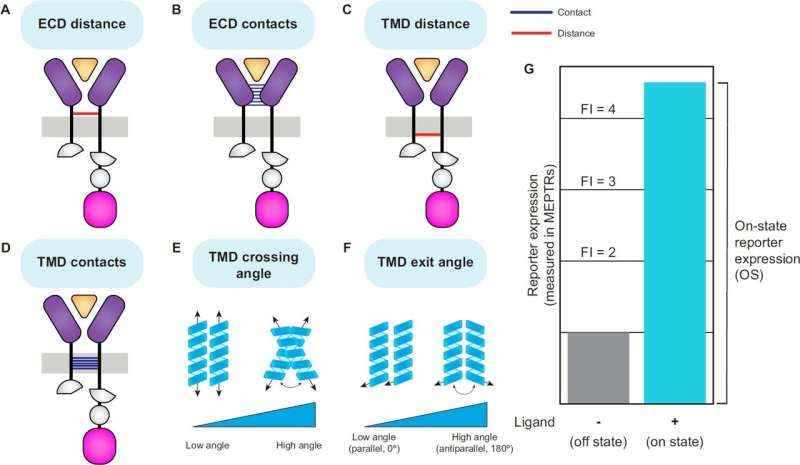Northwestern University researchers have uncovered how specific structural features in engineered cell receptors influence their function. By utilizing advanced computational tools, they offer new insights that could revolutionize synthetic cell therapies.
Unraveling structure and function relationships in synthetic cell receptors

Key Takeaways:
- Researchers identified structural features in synthetic cell receptors that correlate with function.
- Advanced computational tools like AlphaFold and ColabFold were used to model receptor structures.
- Shorter ectodomain and transmembrane domain distances were linked to higher receptor performance.
- Combining structural and categorical models explained 79% of performance variation.
- Findings provide actionable insights for improving synthetic receptor engineering.
Unlocking the Secrets of Synthetic Cell Receptors
In a significant breakthrough for biotechnology, researchers at Northwestern University have identified specific structural features in engineered cell receptors that correlate with variations in their function. This discovery could pave the way for advancements in synthetic cell therapies, offering new hope in the treatment of various diseases.
The Power of Computational Tools
Advancements in protein structure prediction tools, such as AlphaFold and ColabFold, have enabled scientists to model complex proteins, including single-pass transmembrane receptors. “Computational protein structure prediction tools were used to analyze a library of synthetic receptors,” the researchers noted, “revealing that specific structural attributes such as ectodomain (ECD) distance and transmembrane domain (TMD) interactions are associated with receptor performance.”
Focusing on MESA Receptors
The study concentrated on Modular Extracellular Sensor Architecture (MESA) receptors, engineered from natural cytokine receptors. These receptors utilize ligand-induced dimerization to activate a split Tobacco Etch Virus Protease (TEVp), releasing a transcription factor that drives gene expression. By modeling receptor ectodomains in complex with their ligands using ColabFold and transmembrane domain interactions with PREDDIMER, the team quantified structural features like ECD distance and TMD contacts.
Key Findings on Structure and Function
The researchers discovered that shorter ECD and TMD distances correlated with higher on-state reporter expression (OS), indicating improved receptor performance. Additionally, greater ECD and TMD contacts were associated with enhanced function. A combined model integrating both structural and categorical features demonstrated superior predictive power, explaining 79% of OS variation. This integration suggests that while structural and categorical models share some information, they capture distinct determinants of receptor performance.
Overcoming Modeling Challenges
Modeling the entire single-pass transmembrane receptor presented notable challenges. The computational tools struggled with aligning the shorter TEVp regions within long receptor sequences. “Because of these alignment issues, the study opted for a modular approach,” the article explains, “modeling ECD–ligand complexes separately with ColabFold and then using PREDDIMER to capture TMD–TMD interactions.” This strategy ensured higher confidence in the predicted extracellular and transmembrane regions, albeit without fully capturing intermolecular effects.
Implications for Synthetic Receptor Engineering
The findings offer actionable hypotheses for improving synthetic receptor engineering. For instance, modifying receptor linkers to enhance ECD contacts or selecting TMD pairs that favor closer C-terminal proximities could enhance receptor function. These insights could significantly impact the development of engineered cell therapies, making them more effective and efficient.
Looking Ahead
This research not only enhances the understanding of how structural features influence receptor function but also provides a foundation for future innovations in biotechnology. As the study concludes, “The findings present actionable hypotheses for synthetic receptor engineering,” potentially revolutionizing approaches in synthetic biology and therapeutic interventions.











